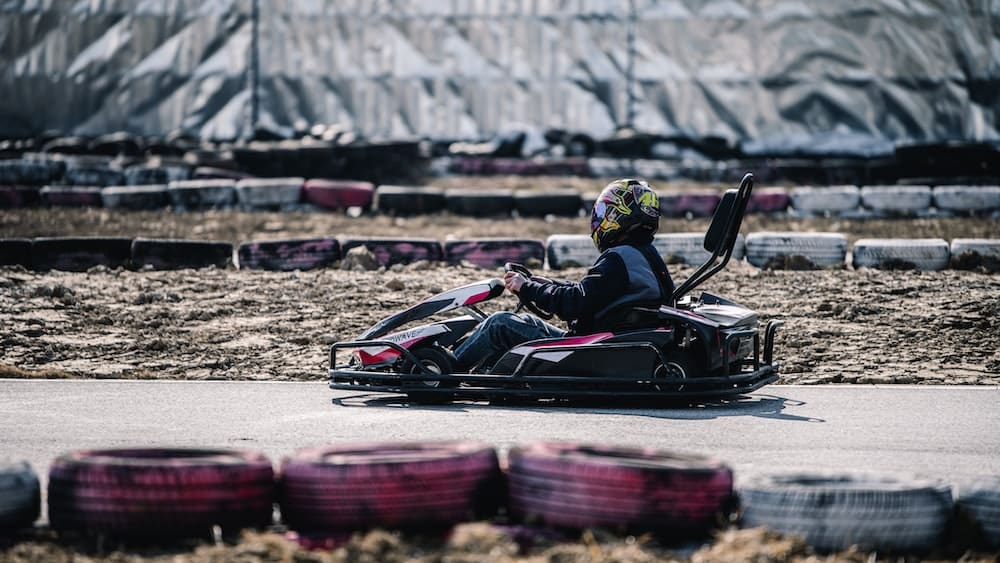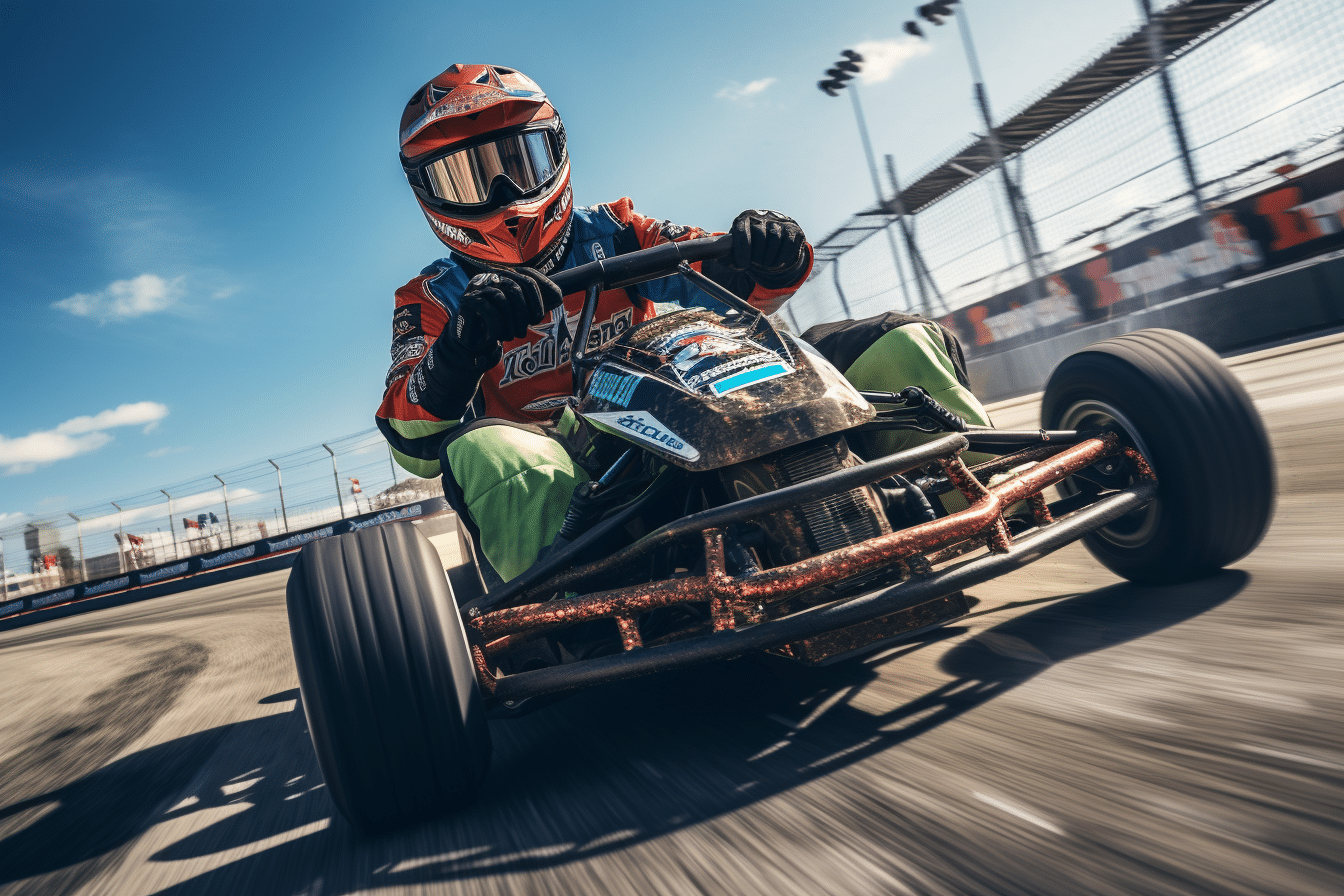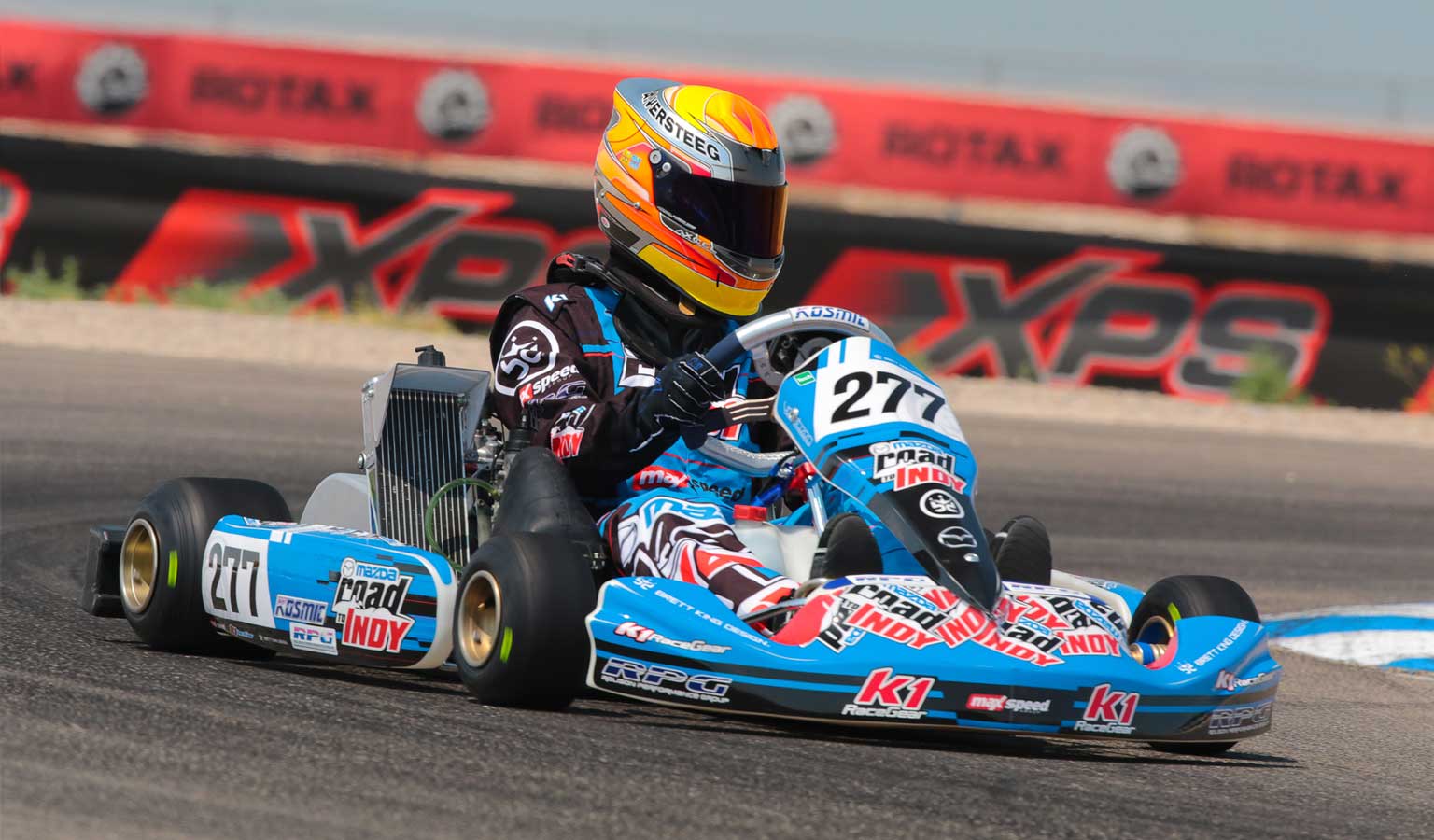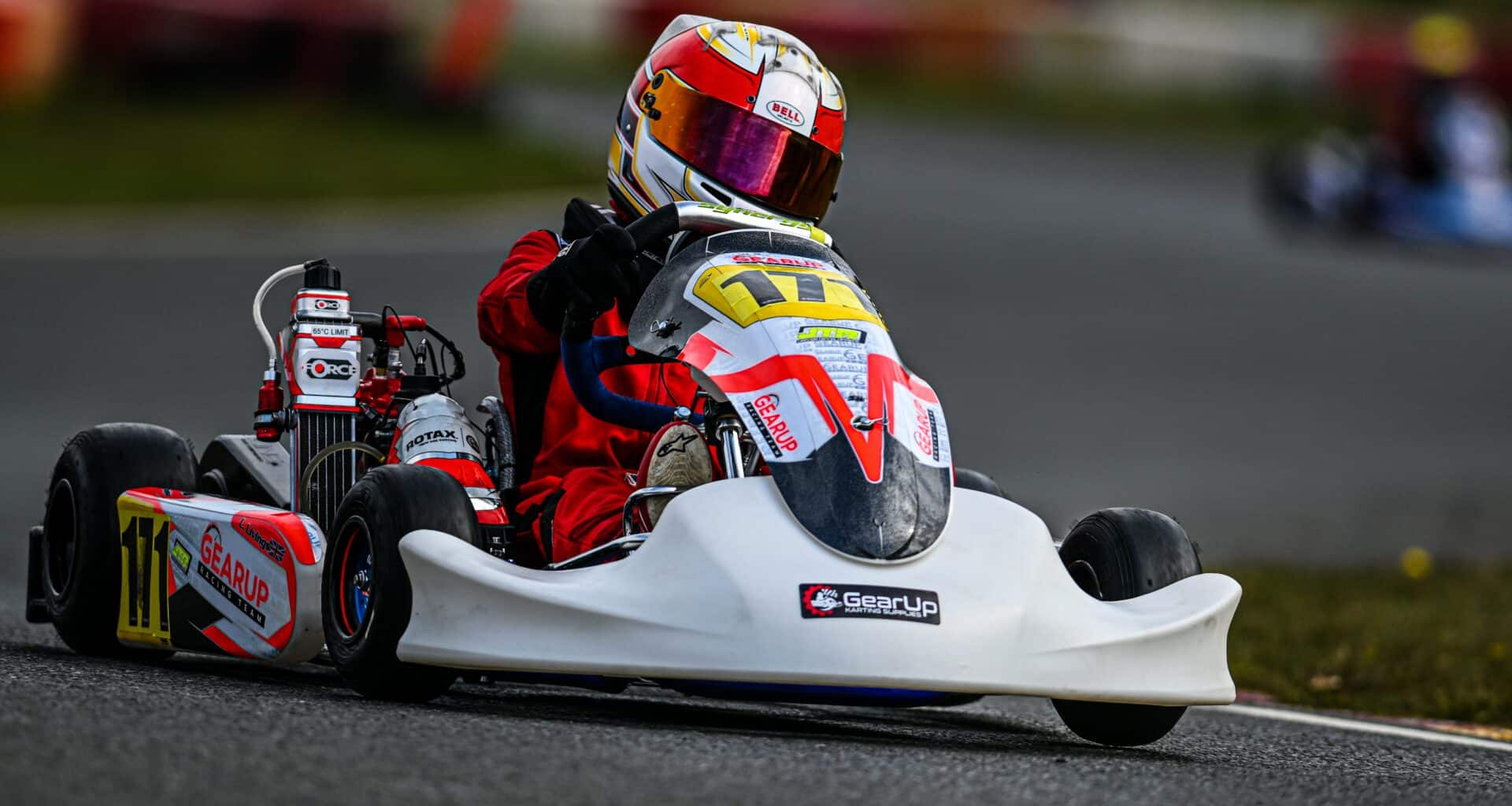Go-kart weight is a critical factor that affects performance, handling, and safety. Unlike larger racing vehicles, go-karts are extremely lightweight and have far less mass overall. This makes go-kart weight even more important to consider. The total weight of a go-kart is made up of several components:
- Chassis weight
- Engine weight
- Bodywork/fairings
- Tires
- Fuel weight
- Driver weight
Reducing go-kart weight enables higher speeds and quicker lap times. But there are limits to how much weight can be removed before stability and safety are compromised. Minimum weight restrictions are enforced in racing classes to ensure fairness and prevent teams from making karts too light. The relationship between weight and performance in go-karts involves many complex factors.
Table of Contents
Why Does Go-Kart Weight Matter?
The Impact of Weight on Speed
Go-karts rely on having a strong power-to-weight ratio – high power from the engine relative to low overall weight. The lighter the kart is, the faster it can accelerate and achieve higher top speeds. With less weight to move, the engine and drivetrain can propel the kart forward more efficiently. This allows the driver to maximize the full potential of the powerplant.
Engineers are constantly seeking ways to reduce unnecessary components and utilize lighter materials in order to minimize overall weight. Thinner gauge metals, composite plastics, carbon fiber, and alloy wheels help shed pounds without sacrificing structural integrity. Since go-karts lack heavy components like giant batteries or passenger seats, shaving off just a few pounds makes a measurable impact on performance.
The Impact of Weight on Control

In addition to increasing speed, lower go-kart weight also enhances handling and control. Less mass makes the kart more nimble with quicker turn-in and transitioning from side to side through chicanes. Heavy go-karts carry more inertia, which means they want to maintain their straight line trajectory and resist changing direction. This inertia makes them more difficult to steer precisely.
Proper weight distribution improves stability and allows the tires to work more effectively. However, too much weight over one axle or another can make the go-kart unpredictable and loose. Excessive overall weight heightens these negative effects and causes handling issues. A well-designed, lightweight go-kart gives the driver more responsive control.
Breakdown: Different Types of Go-Karts and Their Weights
Racing Go-Karts: Weight Considerations
Racing go-karts designed for competition are optimized for speed and performance. Every component is engineered to be as lightweight as possible without compromising durability and function. These karts utilize high-tech materials and skeletal component designs to shed every possible ounce.
Racing chassis without the engine typically weigh between 45-80 lbs. Smaller engine classes such as RoK Cup or TaG Junior may have minimum weights as low as 99 lbs. Larger shifter karts running 125cc engines need more robust components and have minimum weights around 175 lbs without driver or fuel.
However, sanctioning bodies enforce minimum weight restrictions for each racing class and category to ensure safety and equalize performance. These rules prevent teams from making karts too light in pursuit of better lap times. Adding ballast weight is required if karts are found to be under the limit after sessions.
Rental Go-Karts: Weight Considerations

Rental go-karts used at amusement parks and tracks are built very differently than racing karts. Their priorities are reliability, durability, and safety rather than outright speed. Rental karts need to withstand hours of abuse from unskilled drivers banging into walls and each other.
As a result, rental karts use heavier duty components and add protective features such as bumpers, bodywork panels, and roll cages. These karts commonly weigh between 300-375 lbs including the engine. Weight is not as important of a factor since guests are not competing for the best lap times. Slowing the karts down slightly improves safety and reduces potential damage from crashes.
Electric Go-Karts: Weight Considerations
Electric go-karts are relatively new on the scene, but their unique powerplant characteristics affect weight considerations. Battery packs required for all-electric operation are heavy, weighing over 100 lbs in most cases. This pushes total weights for electric karts up to around 319-375 lbs.
On the plus side, electric motors provide instant torque that helps compensate for the extra mass. Continued advances in lithium-ion batteries are steadily reducing weight compared to older lead-acid packs. For now, electric kart weights are on par with gas-powered rental karts, but they avoid the need for heavy roll cages.
2-Stroke versus 4-Stroke Go-Karts: Which is Heavier and Why?
2-stroke and 4-stroke engines use different designs that greatly impact their weight. 2-stroke engines have simpler mechanics, fewer moving parts, and no valve train assembly. This makes them much lighter, often weighing less than half that of a 4-stroke motor of equivalent power.
However, the added components in 4-stroke engines improve fuel efficiency and emissions as well as enhancing reliability and operating life. These attributes make 4-strokes a popular choice for rental go-karts despite the added weight. Their smooth power delivery is also easier for novice drivers to manage.
For competitive racing though, 2-strokes still dominate thanks to their impressive power-to-weight ratios. The power advantage outweighs any weight savings of a 4-stroke. When combined with an ultra-lightweight chassis, 2-stroke go-karts achieve tremendous acceleration and cornering abilities for experienced drivers.
The Relationship Between Weight and Go-Kart Performance
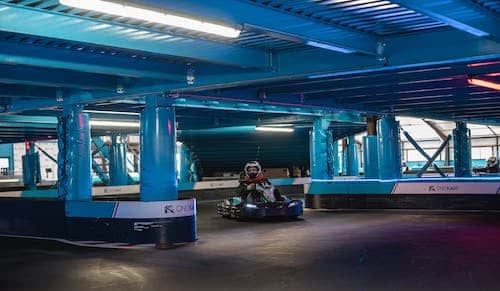
Importance of Weight Distribution in Go-Karts
Properly balancing go-kart weight distribution is vital for stability, handling, and tire grip. Go-karts need even fore-to-aft weight distribution between the front and rear axles. Too much mass over the rear wheels results in understeer as the front loses traction. Excess weight over the front causes oversteer skidding from the lighter rear end.
Equal left-to-right side-to-side weight balance is also critical. Extra weight on one side makes the tires lose grip easier during cornering. Careful placement of components like the engine, fuel tank, and ballast weights allows tuning the fore/aft and side balance. Neutral distribution gives the chassis solid mechanical grip and predictable handling.
The Effect of Weight on Cornering and Acceleration
Go-kart weight impacts cornering and acceleration performance in multiple ways. Because they change direction easier, lighter karts can brake later when entering turns. Quicker turn-in allows taking tighter inside lines. Lower mass also lets karts accelerate harder out of the apex.
Heavier karts carry more momentum through corners, resisting changes in direction. Drivers can use weight transfer techniques – braking to load the front tires, then lifting off the brakes to shift load rearward. Adding power then utilizes available traction to maximize drive out of the corner.
During acceleration, any unnecessary weight slows down forward momentum. The engine has to work harder to build speed. Since power is limited by regulations, shaving off excess pounds is the most effective way to improve acceleration. Cornering and braking require more driving skill to manage weight, but acceleration is purely hampered by extra mass.
FAQs About Go-Kart Weight
The Role of Driver Weight in Go-Kart Performance
In most forms of racing, driver weight is often overlooked. But in lightweight go-karts, even small differences in driver mass can have a measurable impact on lap times. Minimum class weights account for the combined weight of kart and driver, but heavier drivers are still at a disadvantage.
Their greater body mass hampers acceleration compared to lighter competitors. However, experienced heavier drivers can use inertial forces to their benefit by trailing brakes into corners. This loads up the front end for better turn-in. Lighter drivers can’t shift weight as easily.
Ideally, losing excess body weight improves performance by placing less load on the engine. Lighter drivers also have an easier time placing the kart precisely on ideal racing lines. But advanced driving techniques help overcome weight variances.
How Does Fuel Type and Quantity Affect Go-Kart Weight?
Fuel load contributes significant weight in most motorsports, and go-karting is no exception. Some classes mandate a minimum amount of fuel that must be carried on board, usually 1-2 gallons. This can add 16-32 lbs of weight to the total mass.
During long endurance races, the changing fuel levels have a dramatic effect. As the kart burns through the tank, it becomes lighter and handling evolves as a result. More rearward balance occurs as weight shifts back. Drivers must alter lines, braking points, and driving styles to adapt.
In sprint racing, less fuel is needed so weight impact is reduced. Still, shaving ounces here can provide a minor edge. Electric karts avoid fuel weight fluctuations but have constant battery mass to account for.
Concluding Thoughts on Go-Kart Weight and Performance
Go-kart weight has a profound impact on acceleration, handling, control, and safety. A lightweight yet sturdy kart allows drivers to experience incredible cornering and braking forces well beyond what production cars can achieve. Unwanted mass penalizes acceleration and lap times.
However, excessive removal of weight components can make a go-kart unpredictable and dangerous at the limit. Chassis flexing under stress or sudden imbalance leads to spins and loss of control. Careful consideration and precision tuning of weight balance factors is needed to optimize go-kart performance while maintaining stability.
With wise weight reduction and distribution strategies, go-kart engineers and drivers can maximize the incredible power-to-weight potential these minimalist racers offer. Their essentially weightless nature provides some of the most nimble, responsive handling of any vehicle on the planet when tuned just right.
